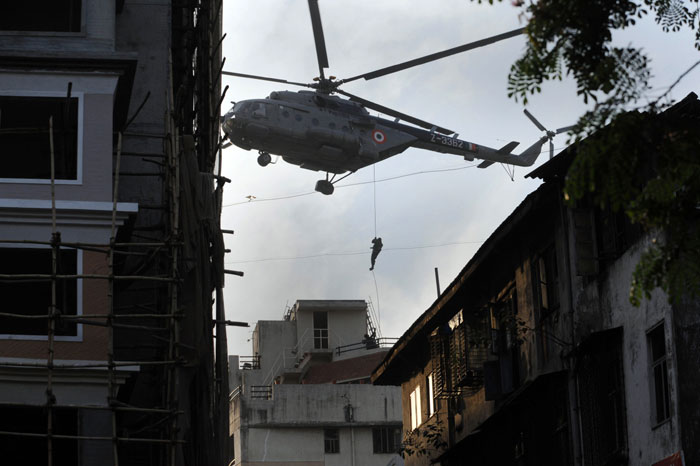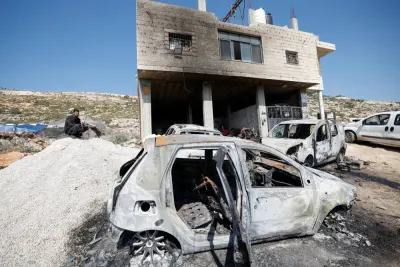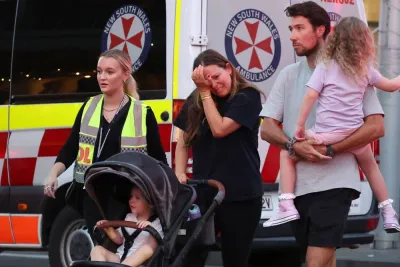In this photograph taken on November 28, 2008, an Indian commando rappels from a helicopter during an operation to end a siege at the Chabad House in Colaba, Mumbai. The Jewish centre has reopened nearly six years after heavily armed militants stormed the building and killed six people inside during the terrorist attacks on the city.
AFP/Mumbai
A Jewish centre in Mumbai reopened on Tuesday, nearly six years after heavily armed militants stormed the building and killed six people inside during the 2008 attacks on the city.
One of several high-profile targets assaulted by the gunmen, Chabad House in south Mumbai was left bullet-ridden and bereft of its directors Rabbi Gavriel Holtzberg and his pregnant wife Rivky, who were both slain in the siege.
They were among 166 people killed in the three-day onslaught in November 2008, which also targeted luxury hotels, a popular cafe and a train station.
The refurbished five-storey Chabad House has a synagogue, a cafeteria and a function room for the Jewish community. The top two floors, due to be turned into a museum, have been left bearing the damage from bullets and grenades as a reminder of the tragedy.
In the synagogue, candles mark the spot where Rabbi Holtzberg was shot dead, and pictures of him, his wife and their surviving young child adorn the stairwells.
"I think this is really a message for the whole world," said Rabbi Moshe Kotlarsky, a prominent member of the orthodox Chabad-Lubavitch movement, who helped to rebuild the centre.
"You can overcome challenges, even the most horrific of challenges. You can and must rebuild, and this project serves as a beacon of light and hope that evil will not prevail," he said in a statement.
Chabad House, tucked away down a narrow lane in the bustling area of Colaba market, was established as an open house for visiting Jews and the local community by the Holtzbergs after they arrived in Mumbai in 2003.
While they were among six people taken hostage in the centre and killed by the gunmen, their young son, then aged two, was plucked to safety by his nanny.
Local jeweller Chintan Sakariya, who witnessed the militants "showering bullets everywhere" in bloody scenes in 2008, told AFP he had a "mixed reaction" to the reopening.
"They're coming back strongly and we support that," said Sakariya, who lives with his family close to the centre.
"But there's going to be a lot of inconvenience for local residents, a lot of security, a lot of blockades."
Sakariya also wondered if the centre might be a target again given recent events in Gaza. "Just pray nothing happens this time around," he said.
Since the attacks, the Chabad-Lubavitch movement has continued its work at various temporary locations across the city.
On Tuesday, 25 rabbis from across Asia gathered at the newly renovated centre, where a $2.5mn Jewish Museum is to be established.
The 10 young gunmen who conducted the attacks, blamed on Pakistan-based Islamist group Lashkar-e-Taiba, came to the shore of south Mumbai after hijacking an Indian trawler out at sea.
In 2012, India executed the sole surviving gunman, Mohammed Ajmal Kasab.
The luxury Taj Mahal Palace hotel, the most high-profile target, reopened in 2010 after a 1.75bn-rupee ($37.3mn) restoration.
The seafront heritage building was badly damaged by fire, smoke and explosions in the 60-hour siege.



